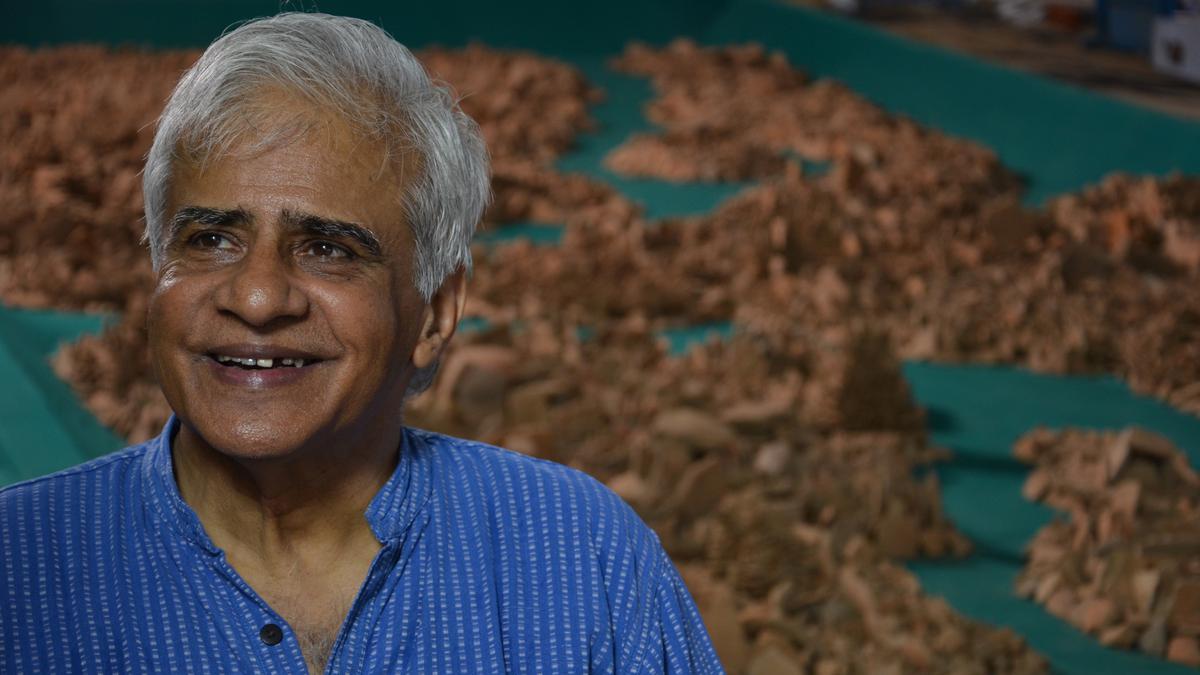One of the most influential artists of his generation, Vivan Sundaram passed away in Delhi on March 29 after a brief illness. A prolific artist, thinker, and activist, his works referred to perception, memory, history, and their intersection with socio-political problems and popular culture.
Over the last two decades, he created projects with varied aesthetics, involving the use of photographs, found objects, video, and three-dimensional constructs. Once you saw a work of Sundaram, it was almost impossible to look away from its vivacity and truth. He did not try to knead his secular politics into his art; activism was the heartbeat of his oeuvre.
Child of May 68
Born in 1943 in Shimla to Kalyan Sundaram, former chairman of the Law Commission of India, and Indira Sher-Gil, sister of the enigmatic artist Amrita Sher-Gil, he studied painting at the faculty of Fine Arts, M.S. University of Baroda and at the Slade School of Art, London. At the Slade, he also developed a love for world cinema. Over the years, for Sundaram, his canvas, materials, and mediums became his screen.
Active in student politics in the U.K., he was influenced by the anti-imperialism and anti-consumerism wave in Europe and would often describe himself as the child of May 68, a time of civil unrest in France and widespread protests in many parts of the world. On his return to India in 1971, Sundaram collaborated with artists and student groups to galvanise events and protests, especially during the Emergency years. He was one of the founding trustees of the Safdar Hashmi Memorial Trust.
Unique installations
A pioneer of installation art, when Sundaram created installations in the 1990s, many senior artists did not understand his sensibility and philosophy. But he had his own ideas for installations and his most important installation — Memorial (1993-2014) — finally reached the Tate Modern in London and garnered much praise.
Some of Sundaram’s most iconic works explore the human condition between politics and history. They have a kind of flatness, which is televisual rather than painterly. His aesthetic register informed his practice and explored unique materials such as charcoal and engine oil.
Varied aesthetic
The earliest example of his installation work is the Engine Oil series (1991), which references the assault of the US-led coalition forces on Iraq in order to gain control of oil resources. Prior to this were the charcoal drawings in Long Night (1988), which reference the giant concrete pillars and barbed wire at Auschwitz.
His most important works include Re-Take of Amrita, an archival family album, a photographic souvenir of the distant past. With the use of digital technology, the pictures embodied the old and the new, weaving in the past the way it lives in the mind: edited, layered, compressed, as though belonging to a dream sequence.
Cityscape of garbage
Another series, Trash, explored the social implications and aesthetics of urban waste and second-hand goods. Constructing a huge and fantastical cityscape in his New Delhi studio entirely with garbage, the resulting composite photographs re-imagined the dreams and aspirations of the architect as a grand city planner while simultaneously poking fun at the folly of such utopian misadventures.
‘Barricade’ by Vivan Sundaram.
| Photo Credit:
The Hindu
The colour and texture of industrial waste, dirty toothbrushes, plastic toys, tin cans, and a sea of empty yogurt containers created panoramas that dwelt on both the astonishing and the absurd.
A proponent of the Baroda School group of artists, Sundaram established the Kasauli Art Centre in 1976 to encourage an interdisciplinary approach and dialogue within arts.
Living legacy
He was one amongst 30 artists specially commissioned to make new work to mark the Sharjah Biennial’s 30th anniversary edition. The ongoing Sharjah Biennial 15: Thinking Historically in the Present (February to June 2023), conceived by the late Okwui Enwezor and curated by Hoor Al Qasimi, includes Sundaram’s photography-based project, Six Stations of a Life Pursued (2022), signifying a journey with periodic halts that release pain, regain trust, behold beauty, recall horror, and discard memory. Having seen it, artist Tayeba Begum Lipi said that it had a magnificent expanse of references and range of materials and looked like a mammoth statement for its relevance in this modern millennium.
Sundaram also set up the Sher-Gil Sundaram Arts Foundation, which is committed to advancing creative independence for art, addressing concerns of the marginalised, and supporting alternative art practices.
He is survived by his wife, the art historian and critic Geeta Kapur.



.jpg)

